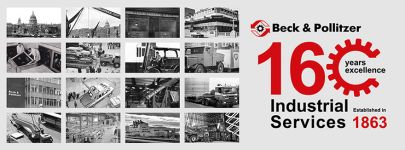Latest News
A complete guide for safe machinery and equipment move

Moving heavy machinery is a task that many companies may encounter at some point. Whether you’re relocating to a new facility, expanding your operations, or upgrading your equipment, the need to move heavy machinery can arise. However, it’s essential to recognize that this process can be both dangerous and complicated. Mishandling or improper planning can lead to accidents, equipment damage, and costly delays. To ensure a smooth and successful relocation, it’s crucial to have a comprehensive understanding of the entire process.
In this guide, we will walk you through the key considerations, best practices, and essential steps involved in moving heavy machinery, helping you navigate this intricate task with confidence and expertise.
Here are the steps to help you with the process of safe heavy machinery and equipment moving:
-
- Pre-Move Assessment:
- Conduct a thorough assessment of the machinery and equipment to determine its dimensions, weight, and any special requirements for disassembly or preparation.
- Identify potential hazards, such as electrical connections, fluids, or delicate components that need to be properly handled or secured.
- Develop a Moving Plan:
- Create a detailed plan that includes timelines, responsibilities, and resources required for the move.
- Determine the best method of transportation, considering factors such as distance, weight, and size of the equipment.
- Obtain any necessary permits or approvals required for transportation, especially for oversized or heavy loads.
- Hire Professional Movers or Riggers:
- Engage experienced and specialized professionals in heavy machinery moving or rigging. They should have the expertise, equipment, and insurance to handle the specific machinery being moved.
- Conduct due diligence by checking references, certifications, and insurance coverage.
- Disassembly and Preparation:
- Follow manufacturer guidelines and best practices for disassembling the machinery or equipment. Take photos or create labelled diagrams to assist with reassembly.
- Disconnect and secure any electrical, hydraulic, or pneumatic connections. Properly cap or seal fluid lines to prevent leakage during transit.
- Remove and safely pack any detachable components, fragile parts, or accessories.
- Rigging and Packaging:
- Use appropriate lifting equipment, such as cranes, forklifts, or hoists, to lift and position the machinery securely. Ensure the lifting capacity of the equipment matches the weight of the machinery.
- Use sturdy rigging materials, such as chains, straps, or slings, to secure the machinery during transport.
- If necessary, create custom packaging or crates to protect delicate or sensitive components. Use padding or cushioning materials to minimize vibrations or impacts.
- Transportation:
- Coordinate with professional transportation companies experienced in moving heavy machinery. Ensure they have the appropriate vehicles, permits, and equipment for secure transport.
- Secure the machinery on the transport vehicle using proper restraints, such as chains, straps, or clamps. Consider using additional bracing or blocking to prevent movement during transit.
- Follow all applicable safety regulations and guidelines during transportation, including weight restrictions, speed limits, and securing requirements.
- Unloading and Reassembly:
- Carefully unload the machinery at the new location using appropriate equipment and techniques. Ensure a stable and level surface for reassembly.
- Refer to the documentation, photos, or diagrams created during the disassembly process to guide the reassembly.
- Reconnect electrical, hydraulic, or pneumatic connections following manufacturer guidelines. Perform necessary testing and inspections to ensure proper functionality.
- Testing and Inspection:
- After reassembly, thoroughly test the machinery or equipment to verify its proper functioning.
- Conduct inspections to ensure there are no damages or issues resulting from the move. Address any concerns promptly.
How Beck & Pollitzer can help with safe machine moving:
This guide only provides a general overview, and the specific requirements for moving heavy machinery can vary depending on the equipment, regulations, and other factors. To ensure utmost safety and adherence to best practices, it is crucial to adhere to manufacturer guidelines or recommendations pertaining to the specific machinery. Alternatively, it is advisable to engage the services of a professional machinery moving company like Beck & Pollitzer.
At Beck & Pollitzer, with 160 years of experience, Our team of exceptionally skilled experts has extensively refined their abilities and acquired unparalleled expertise in meeting the demands of heavy machinery moving. Our comprehensive services cater to a wide range of needs, from moving equipment within a factory to transporting and relocating entire production facilities across countries.
Our expertly trained and professional industrial movers possess specialised skills to handle projects of any size or complexity. That’s possible thanks to the approach we have for each project: we prioritise safety, flexibility and an open outlook while staying up to date with the latest technological and transportation advancements. Unlike some of our competitors who adopt a ‘lift and shift’ approach, we take a holistic view of our projects, considering the impact on all aspects of a business. Additionally, we utilise metrology (laser-tracking) for accurate floor-marking, alignment, measuring, and levelling, ensuring pin-point precision throughout the machine moving process.
Safety is paramount to us, and we meticulously adhere to safety regulations and implement measures to avoid any potential hazards or project slip-ups. Contact us today to discuss your specific needs and discover how our tailored solutions can ensure a successful and seamless moving of your heavy machinery.
- Pre-Move Assessment:

